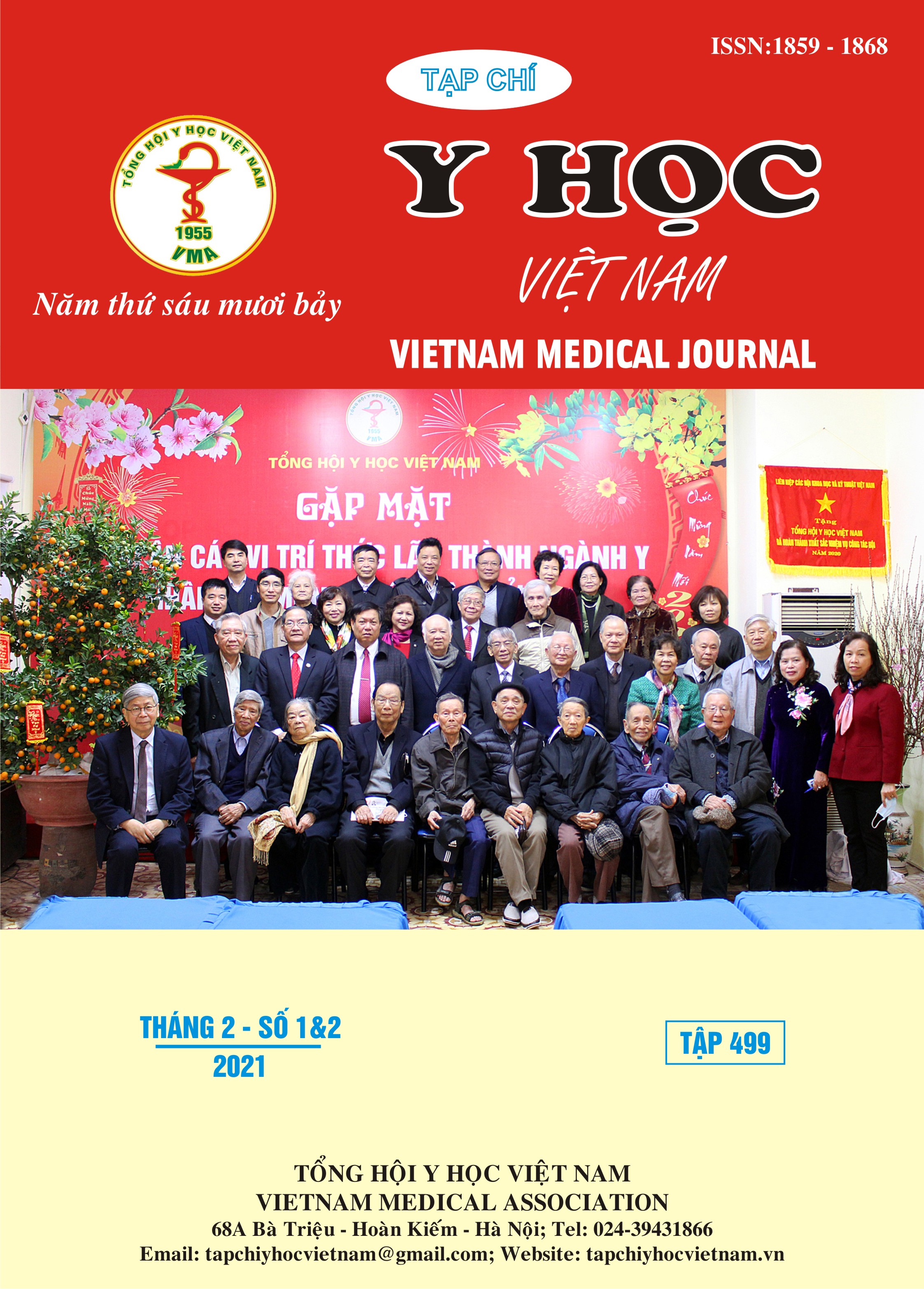CHARACTERISTIC IMAGING OF 99M TC-MAA SPECT/CT IN PRE-TREATMENT PLANNING OF 90Y RESIN MICROSPHERES IN HEPATOCELLULAR CARCINOMA
Main Article Content
Abstract
Background and aim: 99mTc-MAA SPECT/CT imaging is performed after radioembolization to re-evaluate the resin microsphere distribution and estimate the absorbed radiation dose of target tumor. However, role of 99mTc-MAA SPECT/CT simulation was not well established until now. The purpose of our study is to validate the utility of SPECT/CT compared to planar simulation in dosimetry. Material and method: Fifty - two consecutive HCC patients, intermediate and advanced stage who underwent 90Y resin microsphere transarterial embolization (TARE) were recruited in the study. Image characteristic and parameters: lung shunt fraction (LSF), tumor to-normal liver uptake ratio (TNr) and absorbed dose for target tumors were estimated on 99mTc-MAA SPECT/CT and planar. Results: The imaging characteristics including heterogeneity, necrosis and thrombosis uptake were better delineated on SPECT/CT imaging than planar. The agreement and correlation of TNr on SPECT/CT and planar were average (p<0,05. Dtumor on planar is lower than that on SPECT/CT with significant difference (P<0,05). Conclusions: 99mTc-MAA SPECT/CT is superior to planar in simulation before treatment 90Y resin microsphere in tumor delineantion and dosimetry.
Article Details
Keywords
99mTc-MAA SPECT, planar
References
2. Salem R, Lewandowski RJ, Mulcahy MF, Riaz A, Ryu RK, Ibrahim S, et al. Radioembolization for hepatocellular carcinoma using Yttrium-90 microspheres: a comprehensive report of long-term outcomes. Gastroenterology. 2010;138 (1): 52-64.
3. Ahmadzadehfar H, Sabet A, Biermann K, Muckle M, Brockmann H, Kuhl C, et al. The significance of 99mTc-MAA SPECT/CT liver perfusion imaging in treatment planning for 90Y-microsphere selective internal radiation treatment. Journal of nuclear medicine : official publication, Society of Nuclear Medicine. 2010;51(8):1206-12.
4. Giammarile F, Bodei L, Chiesa C, Flux G, Forrer F, Kraeber-Bodere F, et al. EANM procedure guideline for the treatment of liver cancer and liver metastases with intra-arterial radioactive compounds. European journal of nuclear medicine and molecular imaging. 2011;38(7):1393-406.
5. Gil‐Alzugaray B, Chopitea A, Iñarrairaegui M, Bilbao JI, Rodriguez‐Fraile M, Rodriguez J, et al. Prognostic factors and prevention of radioembolization‐induced liver disease. Hepatology (Baltimore, Md). 2013;57(3):1078-87.
6. Gates VL, Esmail AA, Marshall K, Spies S, Salem R. Internal pair production of 90Y permits hepatic localization of microspheres using routine PET: proof of concept. Journal of nuclear medicine : official publication, Society of Nuclear Medicine. 2011;52(1):72-6.
7. Lenoir L, Edeline J, Rolland Y, Pracht M, Raoul J-L, Ardisson V, et al. Usefulness and pitfalls of MAA SPECT/CT in identifying digestive extrahepatic uptake when planning liver radioembolization. European journal of nuclear medicine and molecular imaging. 2012;39(5):872-80.
8. Garin E, Lenoir L, Rolland Y, Laffont S, Pracht M, Mesbah H, et al. Effectiveness of quantitative MAA SPECT/CT for the definition of vascularized hepatic volume and dosimetric approach: phantom validation and clinical preliminary results in patients with complex hepatic vascularization treated with yttrium-90-labeled microspheres. Nuclear medicine communications. 2011;32(12):1245-55.


